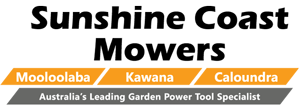Chainsaws are handy for quickly removing dead tree limbs, cutting overgrown tree canopies, sawing fire wood or clearing fallen branches after a storm. As handy as they are though, they are also one of the most dangerous tools on the market and are associated with numerous serious injuries every year. Consequently, there are a few things to consider before purchasing a chainsaw to help reduce the risk of injuring yourself and to ensure you have the right tool for the kind of job you want to do.
There are many different types of chainsaws to choose from on the market. These range from the small, lightweight , easy to maintain, quieter cord and cordless ones to the heavier, more powerful but noisier petrol powered ones. Pole saws are also available, mounted on extension poles to extend the operators reach. Larger petrol powered saws are also available and offer greater mobility and power for uses more commonly in the forestry industry.
The Stihl MS170 range provides a great example of lightweight chainsaws for home owners. It comes in two variants, the Stihl MSE170 C-BQ electric chainsaw and the Stihl MS170 MiniBoss Chainsaw, both available from Sunshine Coast Mowers.
The first thing to think about is whether you have easy access to a power source. If the work you need to do is a distance from an electrical power outlet, the petrol powered chainsaw may be for you.
The type of job you need to do is also important and will help determine the chainsaw’s capabilities and the bar length required. The bigger the piece of wood, the longer the bar length (distance from the cutting tip to where the chain enters the housing). This can be anywhere from 36cm for light jobs and up to 50cm and over for the heavy-duty models. However, the longer the bar length the heavier it will be and the harder it will be to handle and carry around. So pick up the chainsaw and see how it feels while wearing your gloves and whether you are strong enough to control it in a balanced way. This is especially important if you have any back issues that will be aggravated by the vibration and required body positioning while operating a large saw for an extended period. Fatigue is a big factor in causing a chainsaw accident so bigger is not always better!
Safety of course is paramount. While a competent operator with common sense and safe cutting practices is a must, the safety features of the chainsaw are definitely a consideration. Most should have safeguards against the unexpected force of kickback and also vibration dampers. Kickback protection can be in the form of chain brakes to stop the chain or a safety bar in front of the saw handle. Vibration dampers help reduce the vibration and can be achieved through cushioning throughout the machine or simple paddings on the handles.
One of the best safeguards for reducing the possibility of serious injury is proper clothing. Wearing well-fitted long sleeve shirts and trousers, steel toed work boots with non-slip soles to ensure good footing, cut resistant chaps to protect your legs from severe cuts should the chainsaw slip, protective gloves with a good grip to prevent your hands from abrasions and splinters, eye protection and a properly fitted helmet with a face shield are all recommended. Do not forget the potential for hearing damage either – earmuffs or earplugs are also essential when using most chainsaws. Click here to see our range of safety clothing and equipment.
Finally, do your research and buy a reliable brand with good local dealership servicing that brand. Buy one that is strong with sturdy joints and connections, a muffler, carry case and a range of easy to maintain features to ensure the chain can be correctly tensioned, oiled and sharpened. With good care and maintenance, your chainsaw will be a reliable and durable machine for many years to come.
